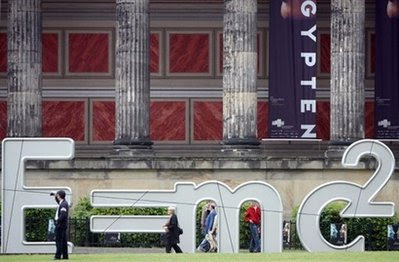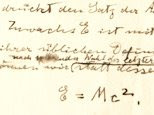By Steven Reinberg
HealthDay Reporter
MONDAY, Dec. 29 (HealthDay News) -- Teens who take virginity pledges are just as likely to have sex as teens who don't make such promises -- and they're less likely to practice safe sex to prevent disease or pregnancy, a new study finds.
"Previous studies found that pledgers were more likely to delay having sex than non-pledgers," said study author Janet E. Rosenbaum, a post doctoral fellow at the Johns Hopkins Bloomberg School of Public Health. "I used the same data as previous studies but a different statistical method."
This method allowed Rosenbaum to compare those who had taken a virginity pledge with similar teens who hadn't taken a pledge but were likely to delay having sex, she said. She added that she didn't include teens who were unlikely to take a pledge.
"Virginity pledgers and similar non-pledgers don't differ in the rates of vaginal, oral or anal sex or any other sexual behavior," Rosenbaum said. "Strikingly, pledgers are less likely than similar non-pledgers to use condoms and also less likely to use any form of birth control."
The findings were published in the January issue of the journal Pediatrics.
For the study, Rosenbaum collected data on 934 high school students who had never had sex or had taken a virginity pledge. The data came from the National Longitudinal Study of Adolescent Health.
Rosenbaum matched students who had taken a virginity pledge with those who hadn't. After five years of follow-up, those who had taken a pledge did not differ from teens who hadn't taken a pledge in rates of premarital sex, oral or anal sex, or sexually transmitted diseases.
Teens who had taken a pledge had 0.1 fewer sex partners during the past year, but the same number of partners overall as those who had not pledged. And pledgers started having sex at the same age as non-pledgers, Rosenbaum found.
The study also found that teens who took a virginity pledge were 10 percent less likely to use a condom and less likely to use any other form of birth control than their non-pledging counterparts.
"Sex education programs for teens who take pledges tend to be very negative and inaccurate about condom and birth control information," Rosenbaum said.
The study also found that, five years after taking a virginity pledge, more than 80 percent of pledgers denied ever making such a promise. "This high rate of disaffiliation may imply that nearly all virginity pledgers view pledges as nonbinding," Rosenbaum said.
She said teens who are religious tend to delay having sex, but that has nothing to do with virginity pledges or abstinence-only sex education programs.
Bill Albert, chief program officer for The National Campaign to Prevent Teen and Unplanned Pregnancy, said teens need to be encouraged to delay having sex, but they also need to be given the facts about safe sex.
"When pledgers fell off the wagon, they fell off hard," he said. "What have we gained if we encourage young people only to delay sex until they are older, but when they do become sexually active, they don't protect themselves or their partners?"
"The notion that it has to be either a virginity pledge or encouraging teens to have sex is a false dichotomy," Albert added. "There is a public consensus in this country to encourage teens to delay sex, but also provide them with information about contraception."
More information
For more on teens and sexuality, visit The National Campaign to Prevent Teen and Unplanned Pregnancy.
KATHMANDU (AFP) – A young man believed by followers to be a reincarnation of Buddha has returned to Nepal's jungles to meditate alone, police said Saturday, as scholars cast doubt on his supporters' claims.
Known as the "Buddha Boy," Ram Bahadur Bomjam, 18, became famous in 2005 after supporters said he could meditate motionless for months without water, food or sleep.
"Bomjam went back into the jungle late Friday and all the devotees have left," police officer Gobinda Kushwaha told AFP from Neejgad, a town in Bara District, 60 kilometres (37.5 miles) south of Kathmandu.
The "Buddha Boy" reappeared earlier this month after supporters said in March 2007 that he was going to meditate for three years in an underground bunker, although he was spotted on two occasions.
For the last 10 days, he has been blessing thousands of devotees who came daily to the site in dense jungle close to Neejgad.
The president of the Nepal Buddhist Council said claims by his supporters that he was a reincarnation of Siddartha Gautama, the founder of Buddhism, were not credible.
"We do not believe he is Buddha. He does not have Buddha's qualities," said Mahiswor Raj Bajracharya, president of the Nepal Buddhist Council, a centre for Buddhist study and research in Kathmandu.
"He may have achieved great heights in meditation, but that alone does not make him a Buddha. A Buddha needs life experience, a young man who has not seen the world at all cannot be a Buddha," said Bajracharya.
Despite being officially secular under the new Maoist government, Nepal -- where around 80 per cent of people are Hindu and 11 per cent are Buddhist -- remains a deeply spiritual place.
"This is a country where people worship idols and stones, and everyone educated or not believes in the supernatural," the Buddhist scholar said.
Some 7,000 people gathered Friday to hear the youth speak.
"Materialism has brought forth fear, worry and disputes and has created war in this country. One should follow religion and philosophy for inner happiness," Bomjam told the crowds in a 15-minute address.
People joined a six-kilometre (3.75-mile) queue to be blessed, a wait that 43-year-old farmer Singha Bahadur Tamang said was worthwhile.
"This is a miracle and he is the reincarnation of Lord Buddha himself," said Tamang, who traveled eight hours by bus to hear Bomjam speak.
"I've been here for the last 10 days and the feeling is amazing. I really feel at peace here," he said.
The head of the committee that organises events around Bomjam insists he survives without food and water.
"We have never seen him eat or drink and we believe he's a god in human form," said Bed Bahadur Thing, president of the Buddha Jungle Meditation Conservation and Prosperity Committee.
At the height of Bomjam's fame, a French TV crew filmed the youth eating fruit and an AFP correspondent caught him napping.
On Friday, visitors to the jungle site put money into collection boxes, though Thing declined to say how much had been collected.
"Many people say we're just doing this for the money, but we have expenses for volunteers, food, security and maintenance," he said.
"After he has gone back into the jungle, we will make our accounts public."















